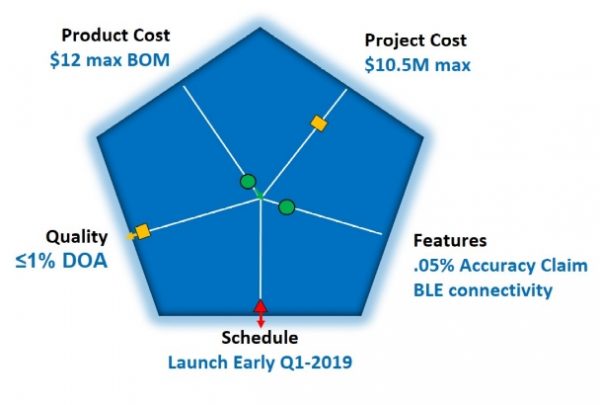The values contained in the Manifesto for Agile Software Development might be good for the Agile teams, but most of the senior management in organizations prefer having a defined solution, a detailed planning and a budget that should be respected. This article discusses how to make these two different approaches work together.
Author: John Carter, TCGen, https://www.tcgen.com/
Your development teams may be Agile, but chances are that your Management team isn’t. Upper management lives in a world where there are known and limited budgets and where they are accountable for the quality of their investments. In a public company they have made commitments to financial markets to perform to spec and in a certain timeframe.
We have piloted with several organizations a model that creates a bridge between Agile development teams and senior management. This bridge is built on exception management.
Not Every Problem Has An Agile Solution
Agile is a great way to get more features delivered, faster but not all problems have Agile as their solution. These larger problems are often external to the team. They have the potential for doing serious damage to an organization. Problems that require solutions outside Agile includes:
- Funding more than 2x initial allocation
- Quality so low, it will affect brand perceptions
- Dependencies that cause one or more teams to fail
- De-featuring so dramatic that it jeopardizes project justification
- Regulatory problems (legal, trade, safety, privacy)
Creating an agreement between the team and management
Our bridge between the Agile team and management resolves these types of issues through a mutually agreed upon framework created at the start of the project. Each project begins with the dev team and upper management coming to an agreement with management. The dev team and management agree on an MVP. They define it by creating three-to-five parameters that will define the project’s success. Typically, these include aspects of the product such as features, cost, timing, and quality. The agreement defines quantitative thresholds for each of these parameters.
Establishing Boundary Conditions
In the IOT example below, taken from a home security tech firm, a company agreed on the following parameters: Product and project cost, features, quality and schedule. They then agreed to quantitative thresholds for each parameter. The agreement between management and the team established that the team must not exceed these thresholds.

Having established these parameters, and the metrics associated with each of them, the team can then use an Agile process, with story points, sprints, etc., targeting the agreed upon metrics. As long as the team expects to meet its targets, the senior team lets the team work without interference. It does not meddle, demanding reviews and updates from teams that are meeting their agreements. Management only steps in when there is an exception, i.e. if the team reports that they are in danger of crossing one or more of these thresholds.
Escalation Process
Our model also includes an escalation process when it looks as if the team will go out of bounds with respect to the agreed upon metrics. This escalation process begins with the team informing management of a potential boundary break. The team specifies which boundary they are likely to cross, and the team also recommends a solution to the boundary break.
The management team then responds to the Dev team in a matter of hours or days – not weeks or months. If upper management agrees with the team’s recommended solution, then the team implements it without further ado. If management does not concur with the team’s solution, or if the quantitative target needs to be renegotiated, then they call a face-to-face meeting and management and the team agree on new metrics for the project as needed.

Building a Bridge Between Agile and the Senior Team
This method of exception management has been found to be very effective with Agile teams, where the emphasis is on empowerment and self-reliance. This approach satisfies upper management’s need for predictability and a measure of reliability, while favoring agility and team empowerment that encourage innovation and accountability at the team level.
Exception management, combined with a clear and rapid escalation process, builds a bridge between Agile teams and the more traditional planning methods necessary in public companies with external commitments. It embeds Agile in a waterfall environment. We’re finding that these hybrid processes are not only nice-to-have. They are best in class.
About the Author
John Carter is a widely respected adviser to technology firms and the author of Innovate Products Faster: Graphical Tools for Accelerating Product Development. He is Founder and Principal of TCGen Inc. He has advised some of the most revered technology firms in the world including Apple, Amazon, Cisco, HP, IBM and Roche.

